
Photo: Kunga Tashi
This article is based on fieldwork conducted in Sikkim between 2018-2019. The author conducted semi-structured interviews, extended conversations with employers and employees in different retail sites in Gangtok, Sikkim and participant observation of the respondents’ roles and responsibilities.
Introduction

Photo : Samridh Rai
In Sikkim young women saturate consumer spaces, both as customers and labour; as labour they occupy most public-facing roles as waitresses, shop/stall assistants, customer service assistants, delivery agents, and even security guards. Young women migrate from within and outside the state to peri-urban and district capitals to work in this expanding informal sector that demands very little of them in terms of technical skills or financial literacy. The important qualifying emphasis being their youth and gendered assumptions around docility, manageability and flexibility.
This informal sector thrives on the back of rapidly expanding consumerism, the unceasing supply of cheap, flexible and docile labour and the invisibility of laboring bodies and their inherent precarity.

Photo: Kunga Tashi
Many women working in urban/peri urban areas of the eastern Himalaya are first generation migrants. Unlike their mothers and grandmothers, who experienced informality and precarity as informal labour in agricultural fields, tea estates or in other manual jobs, young women working in shops, cafes and restaurants of Gangtok and other peri-urban areas, learn to maneuver a very different landscape of informality. While informal jobs and precarious lives might be the norm rather than the exception for the majority of women in the eastern Himalaya, there is now a shift in the location of this informality— from agriculture fields to shopping malls; from rural to urban/peri-urban areas.
This informal sector thrives on the back of rapidly expanding consumerism, the unceasing supply of cheap, flexible and docile labour and the invisibility of laboring bodies and their inherent precarity. Nonetheless, at the same time, the informal sector and the attributes that it seeks, also allows women workers to generate new networks and develop new skills in order to negotiate precarity.

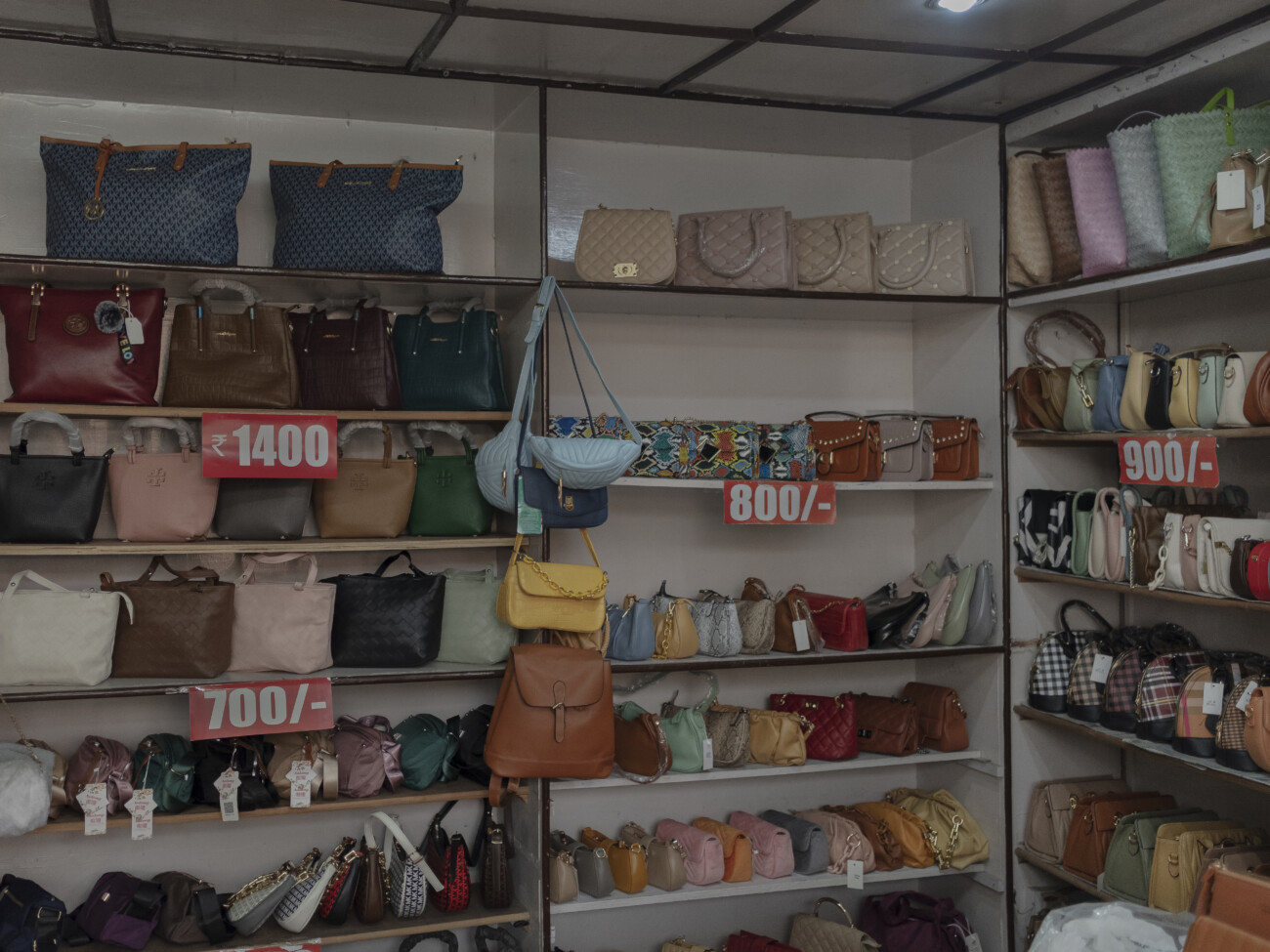

Photo : Kunga Tashi
This article looks at the proliferation of gendered, informal labour in Sikkim, specifically in the retail sector. It illustrates the relationship between consumerism, informal labour and new forms of socio-economic vulnerability in Sikkim. Across India and in Sikkim, there is a marked increase in ‘gendered’ work opportunities that are considered appropriate/suited for women because of stereotypes and assumptions around gender and gender roles. In the retail sector in Sikkim, most of the customer-facing jobs are based not only on gender, but also on superficial and physical attributes like skin colour, clothing, hairstyle etc. The emphasis on gender, beauty and fashion rather than education, financial literacy, and technical skills has eased access to informal labour.
In the retail sector in Sikkim, most of the customer-facing jobs are based not only on gender, but also on superficial and physical attributes like skin colour, clothing, hairstyle etc. The emphasis on gender, beauty and fashion rather than education, financial literacy, and technical skills has eased access to informal labour.
This in turn, has encouraged female out-migration across different sections of the society and not just the educated and the upwardly mobile.
For the women working in the informal sector, their precarity as workers is exacerbated by its invisibility on two levels. First, their non-recognition as ‘labour’ by the state, leaves them without any legal rights or safeguards from exploitation. Their challenges and problems remain invisible and removed from organized labour politics; this is especially pertinent in Sikkim, which till recently had remained insulated from large-scale industrialisation and private sector investment. There are no strong organised labour movements in Sikkim’s industrial history. More importantly, the increasing privatization of labour has resulted in small-scale, localised conflict mediation, which precludes any collective action. Retail and service sector workers form an even smaller, fractured subset of workers, with very little political reach, exacerbating further the disempowerment that is associated with informal work.
Second, given the proliferation and easy consumption of fast-fashion, and the pressure on women workers to present themselves as fashionable, the socio-economic insecurity that comes with these jobs in the retail sector remains invisible. While it is difficult to ascertain whether their emphasis on clothes and make-up is a work pre-requisite or personal choice, their focus on style and fashion, makes it difficult to ‘see’ the precarity that comes with working in a labour market that relies on women’s youth and physical attributes.

Photo : Kunga Tashi
In Sikkim, the demand for branded consumer goods, or rather their fakes and first copies has given rise to a secondary grey market for duplicates. Along with fast-fashion items, Gangtok, like many other capital cities in the north-east is going through a coffee-shop, bakery, restaurant and lounge-room boom. Everything that once could only have been imagined— sushi, Korean barbecue, macrons, gelato— is now available and all these changes have taken place over the last two decades. Technological advancement, infrastructural development combined with a constantly evolving consumer base of trend savvy, young adults has catalyzed changes in the retail business model too. Along with investment in upgrading and retrofitting premises, one of the key features of this changed business model is the reliance on young people, especially women, in all public facing roles.
Gendered opportunities and challenges
Women have always been important contributors to the domestic labour force as agriculturists, teachers and clerks or small-scale family run businesses. Over the last two decades the retail and services sector has transformed drastically, and women are at the forefront of this transition as waitresses, managers, shop assistants and even security guards. A core feature of this transformation is the emphasis on the affective attributes of the labour; an attribute considered so important, that even when the job isn’t necessarily a ‘woman’s job’, young women are, nonetheless recruited for it. For instance, a newsagent in Gangtok hired young women to operate the photo-copier machine and sell magazines; the lottery shop next door too hired women to sell lottery-tickets. Operating a photo-copier machine or selling lotteries may not be distinctly ‘women’s jobs’, and yet, rely on femininity to draw in customers.

Photo : Kunga Tashi
For women working in retail and services, there is no distinct recognition as labour or any other specific professional category of belonging or cohesiveness. There are no unions, no pensions funds or health insurance
Women’s participation in the services and manufacturing sector (especially, the pharmaceutical factories), and in an urban/peri-urban setting is unprecedented in the eastern Himalaya, made easy by the very low educational/technical qualification threshold; the basic requirement sought by the employers are generally are, punctuality, reliability and docility. Except for wait-staff and assembly-line workers, work in the retail sector requires very little training. For instance, for those working as sales assistants, their main job is to look presentable, answer questions, display products and stack shelves. All business decisions and everyday accounting is usually handled by owners and managers, who are usually men.
For women working in retail and services, there is no distinct recognition as labour or any other specific professional category of belonging or cohesiveness. There are no unions, no pensions funds or health insurance. And yet, hundreds of women migrate to urban and peri-urban areas to work in this sector. For many young women entering the workforce, informality is the norm. Securing employment in the hyper-competitive and saturated public sector job market is partly dependent on stellar educational qualifications, and a large part social and political positioning. In Sikkim, affirmative action policies and politics are organized along ethnic and tribal affiliations, thus employment opportunities are also dependent on the political leverage of a particular ethnic group.

Photo : Samridh Rai
Employment in the public sector is further ring-fenced around Sikkim Subject holders. Many young people grow up with the inevitable future of either unemployment, underemployment or some obscure employment in the informal sector. For many from rural or impoverished backgrounds, migration has also become a part of that inevitability. However, most migration continues to be overwhelmingly regional, with majority migrating to urban/peri-urban areas with familiar linguistic and cultural backgrounds. Out-migration to other parts of India, while not uncommon, is therefore not as popular especially amongst women and many migrants often return to the safety and familiarity of the hills.
Navigating insecurity
Women working in the retail and services sector comprise a population of floating workers whose professional lives are built completely around personal contacts and relationships. Descriptions of the hiring process by all the respondents included at least one or two networks that they had tapped onto before finding work. It is not uncommon for shops and businesses to hire potential employees through a “Job Vacancy” note on their windows. Employers enquire with their staff, who then circulate it within their social network. Along with recruitment, every other aspect of their job is informal; there are no formal written contracts or job descriptions, except for those recruited by local manpower companies. Everything is vetted verbally, from job descriptions, responsibilities to qualifications and references.
While the work itself might look seemingly easy, attaining and maintaining employment requires resilience and social capital built over many years.
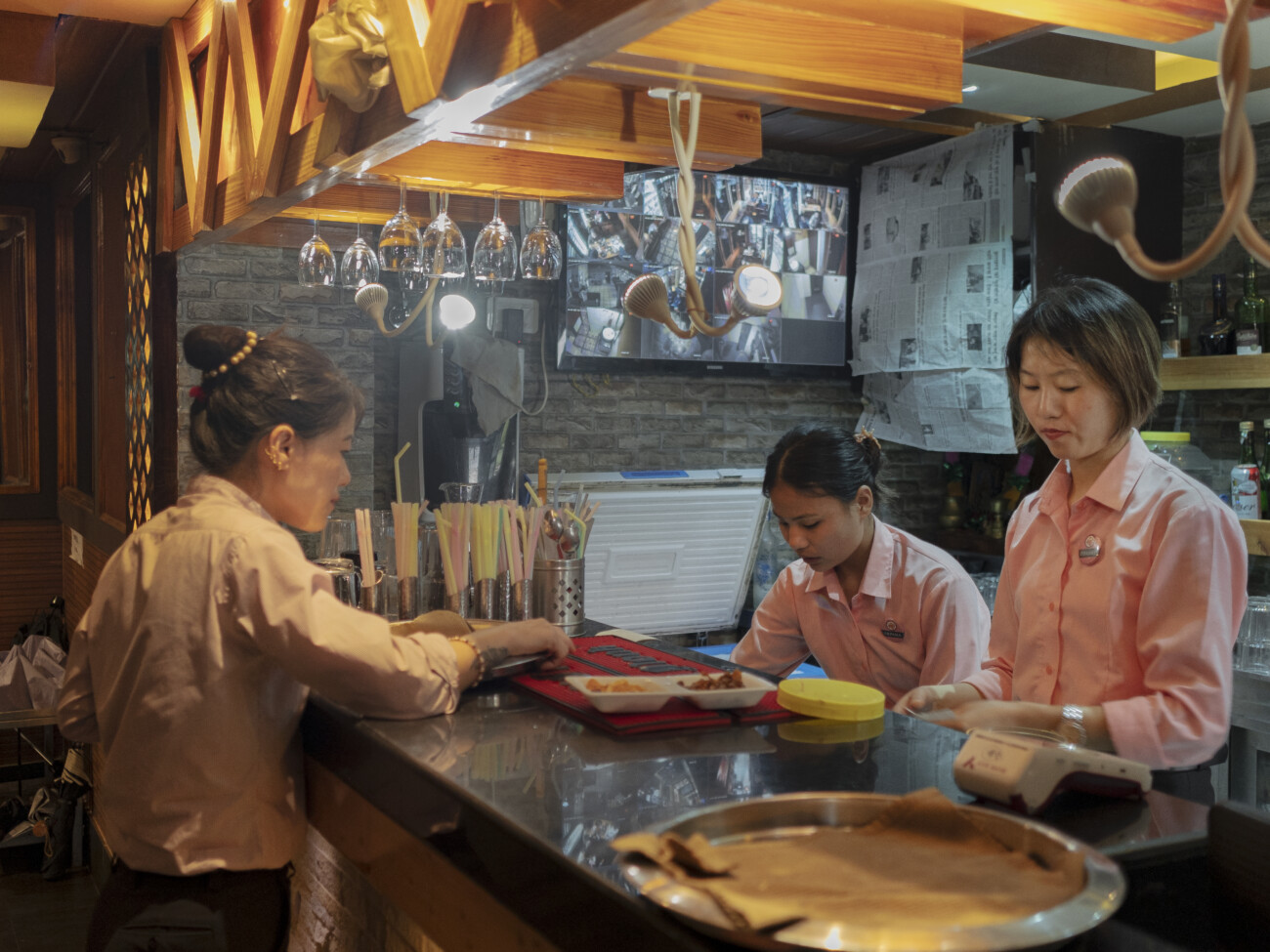
Photo : Kunga Tashi
While the work itself might look seemingly easy, attaining and maintaining employment requires resilience and social capital built over many years. Women learn to navigate this landscape of precarity through experience, and by honing their skills to match the requirements of different jobs. For instance, one respondent had gone from being a waitress, to a kitchen-hand to a beauty consultant in a local fair. She had honed her customer service skills, familiarized herself with beauty products and now educates customers on the difference between a bronzer and a highlighter. Women workers have to be proactive in creating and maintaining social networks and in learning new ways of communicating within their networks as well as with customers, learning the correct words, keeping themselves abreast on the latest trends and presenting themselves in a stylish, youthful fashion. In a sector where there is no dearth of potentially younger replacements, these small but vital visual and verbal signifiers can often determine the difference between employment and unemployment.
Despite the variety of informal work that the women are involved in, a shared working space, whether it be a mall, a fair or shopping center, facilitated friendships and other social networks. Often, they traded information about employment opportunities and compared the pros and cons of a particular job or working with a particular business owner. Not all decisions to take up employment were based on monetary conditions; many made their decisions based on either their working relationship with business owners or experiences of friends or other women in their social network.
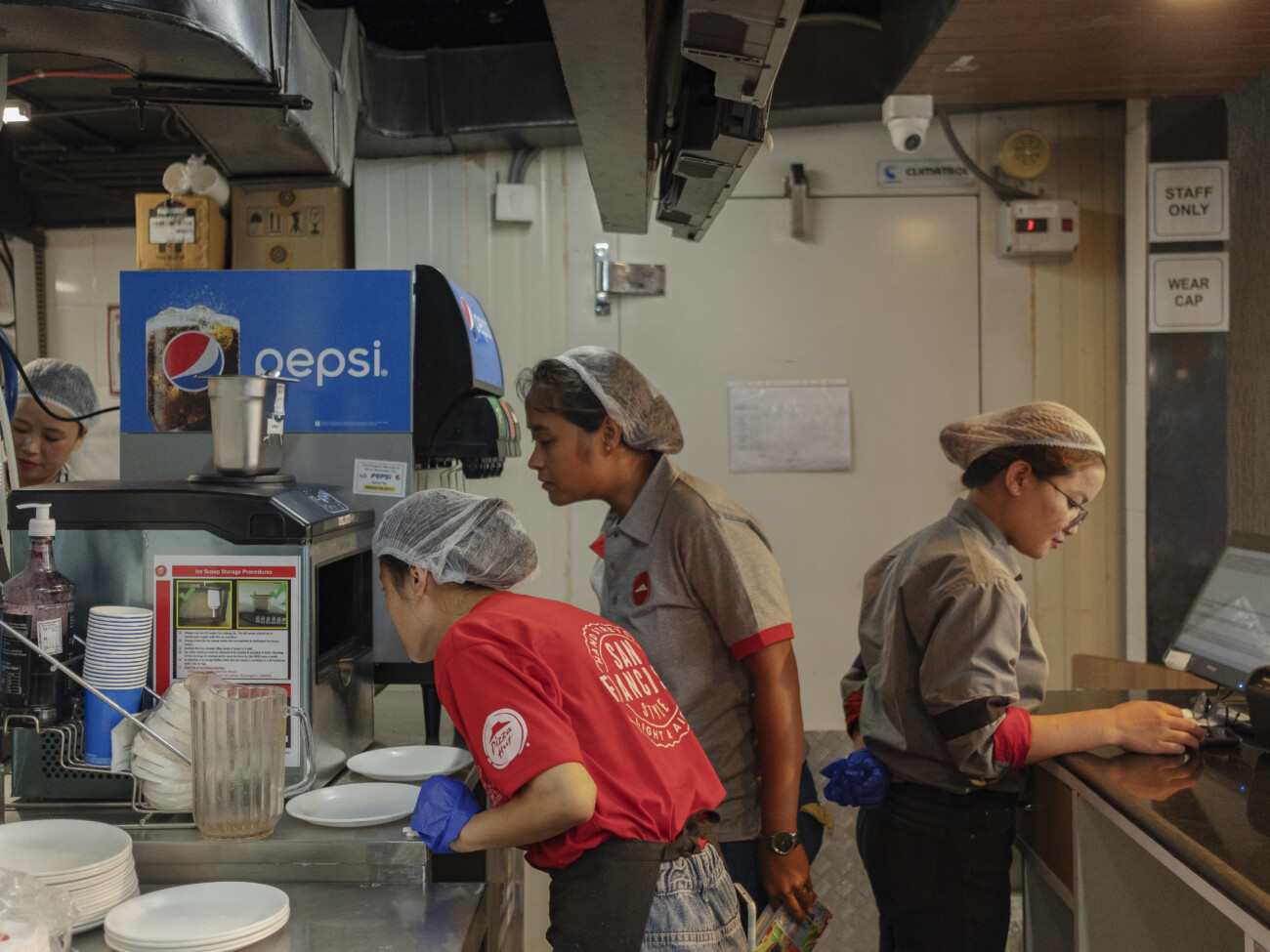
Photo : Kunga Tashi
While familial and kinships networks are a common starting point, women workers were also quick to adapt and create their own networks. Their identity as migrants, living in shared accommodation with other migrant women in similar professional situations was useful for finding work. And once in this circuit of informal work, women cultivated networks with other women at the workplace and business owners that could be translated into work for themselves and others in their network. And very often, they quickly learnt to use informal labour relations to their advantage. For instance, since there were no educational/technical pre-requisites for most jobs, women were able to change jobs with relative ease.
Business owners complained of the high turnover rates and absenteeism, which they attributed to a variety of ‘social problems,’ a polite hint towards possible prostitution, drug addiction and extra-marital affairs. They expressed that, for many young women, work in the retail and services sector were ‘fillers’ till they finished their education, got married or found other, more stable employment in a factory or an office, especially in the public sector. No formal, written contracts meant that women could quit work without any notice, or on very short notices and on the smallest of pretexts. For instance, one respondent had changed jobs from waitress to a kitchen hand because ‘she did not like memorizing orders.’ A single managerial point of contact and no bureaucracy meant that women could maintain a clear, unhindered channel of communication with business owners, and could rely on them to be sympathetic to their requests for holidays, advance pay.
Nonetheless, given their already insecure position, women workers cannot always negotiate to their advantage.

Photo : Kunga Tashi
However, this did not necessarily mean that they did not suffer from the cycle of insecurity and possible exploitation. Finding the confidence to negotiate and learning the tactics of negotiation had to be honed over years of working for different businesses, reading beyond the unwritten rules of employment, building trust, cementing networks. Nonetheless, given their already insecure position, women workers cannot always negotiate to their advantage.
It is also not difficult to imagine informality, which with its limited advantage, placed women in potentially difficult and dangerous situations and came with its own sets of obligations and problems. Cultivating these relationships which are often skewed in favor of business owners, is time-intensive and characterized by the gradual blurring of professional and personal lines. Although there might not always be a sexual or exploitative element to these semi-professional relationships, women workers are often powerless and have to tolerate uncomfortable conversations, questions, encroachment of personal space and untoward behavior.
Conclusion
The increasing participation of women in the retail and services sector raises many questions and contradictions between work, exploitation and empowerment/agency. For many women, work in the retail or services sector is possibly their first job and for many, their only source of employment. Earning money of their own, can be an empowering experience in itself. (Of course, who or how they ultimately use it may not further this feeling of empowerment.) Navigating this landscape of informal employment, whether it be in malls, shops, fairs or trade expos, probably gets easier with time and age. However, it is difficult to claim that conclusively because it was impossible to find older respondents (30-35 years and above) working in the retail and services sector. For many, reaching the end of their careers, marriage and domestic life was the easiest option out. While some tried to start their own small business (canteen or grocery shop), others returned to their villages, and back to agriculture. And thus, their cycle of precarity continued, albeit in a different form. By choosing to work irrespective of the precarity, the insecurity and risks, building their entire professional lives on interpersonal relationships, women show courage, initiative, creativity, determination and agency. While consumerism creates work opportunities that would otherwise not have existed, the same opportunities also expose women to new forms of possible exploitation and insecurity. These contradictions illustrate the unfolding of a landscape of empowerment and exploitation for an entire generation of workers with transitory, uncertain employment opportunities, unstable economic and social lives and limited political voice and agency.
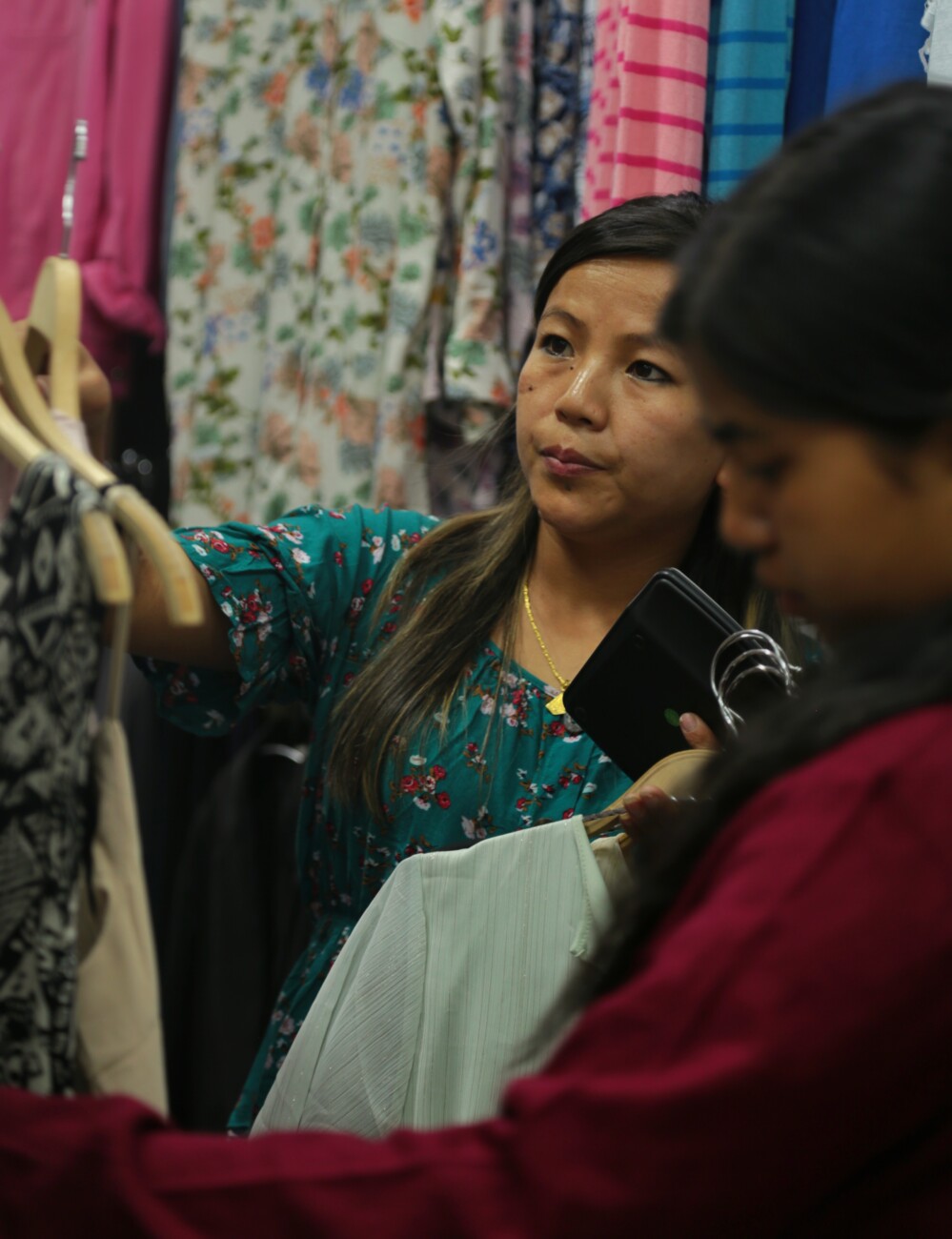
Photo : Samiksha Gurung

Photo : Samridh Rai
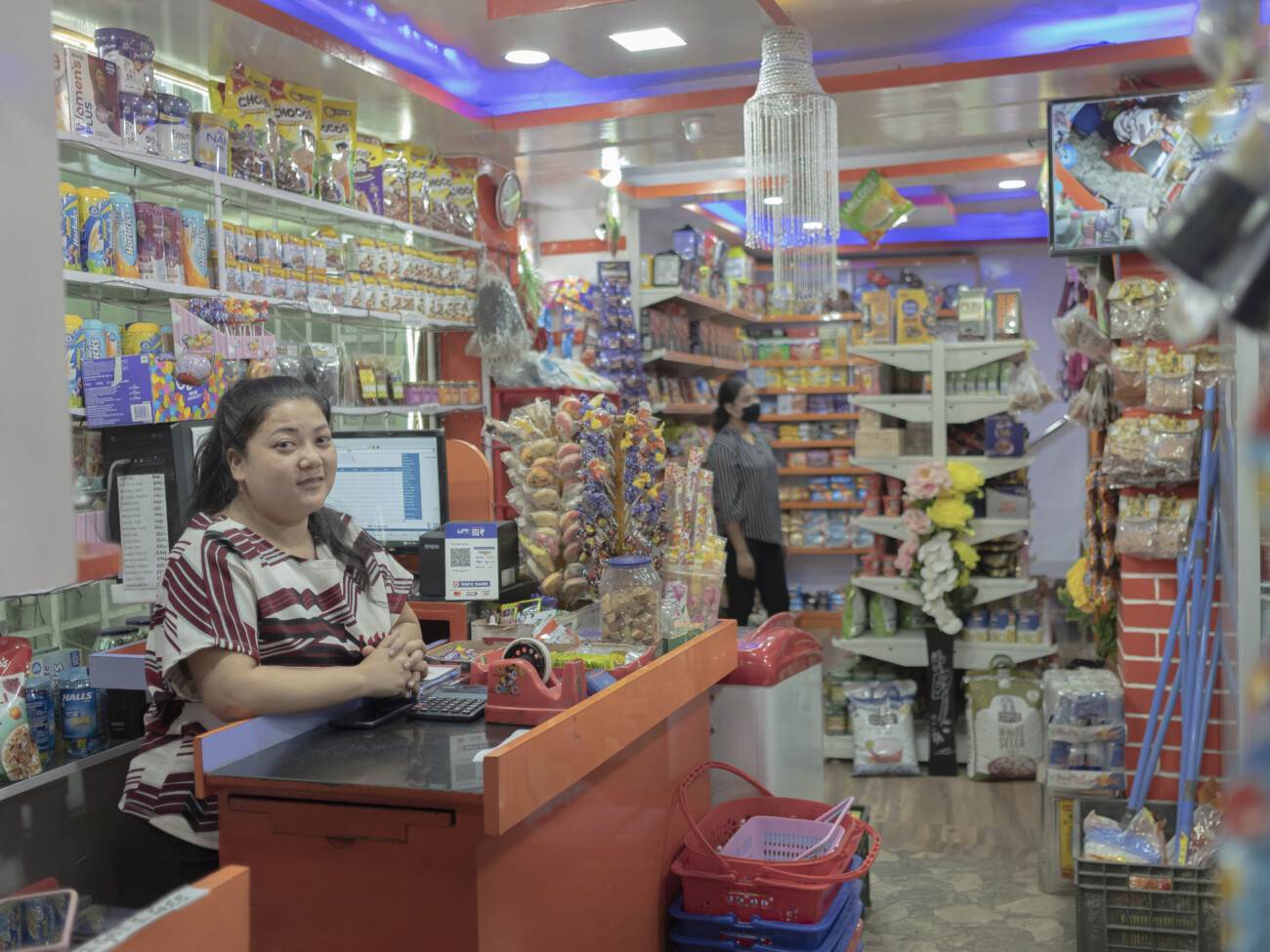

Photo : Samridh Rai
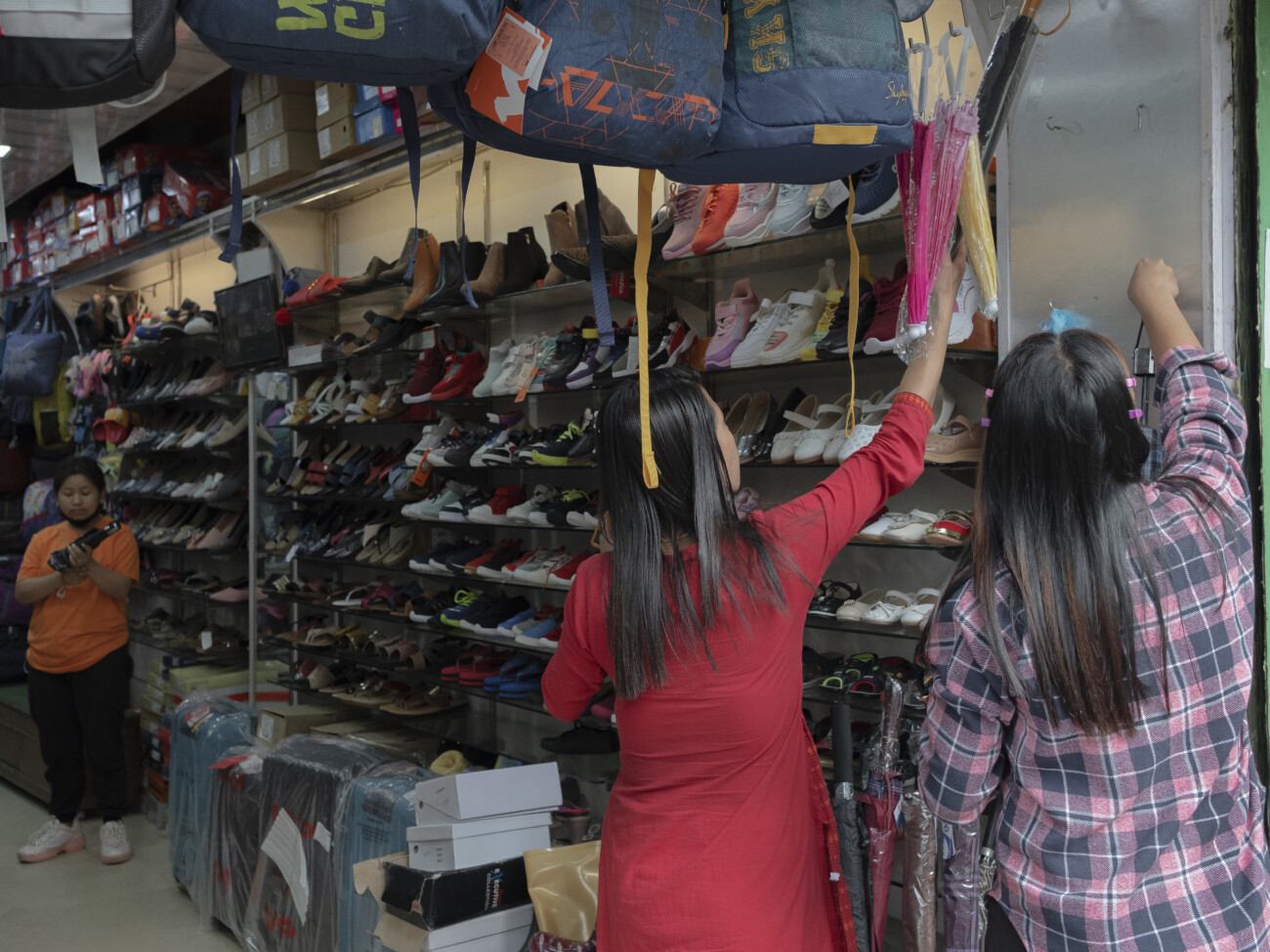
Photo : Kunga Tashi

Mona Chettri is a Post-Doctoral Research fellow at the Australia-India Institute, University of Western Australia. She has worked extensively on urbanisation, ethnicity, environmental politics and development in the eastern Himalayan borderlands of Sikkim, Darjeeling and East Nepal. She is the author of Constructing Democracy: Ethnicity and Democracy in the eastern Himalaya (Amsterdam University Press, 2017) and co-editor of Development Zones in Asian Borderlands (Amsterdam University Press, 2021). Her current research focuses on the intersections between gender, labour, urbanisation and infrastructure in the Sikkim-Darjeeling Himalaya, India and Himalayan immigrant labour in Australia.
2 comments on “NAVIGATING INSECURITY: WOMEN IN RETAIL”
Leave a Reply
Latest Posts
Latest Comments
No 'Comments_Widget_Plus_Widget' widget registered in this installation.


This is my first time pay a visit at here and i am in fact happy to read all at single place.
Detailed and relevant with compelling pictures that perfectly captures Sikkim's present reality. Keep up the good work.